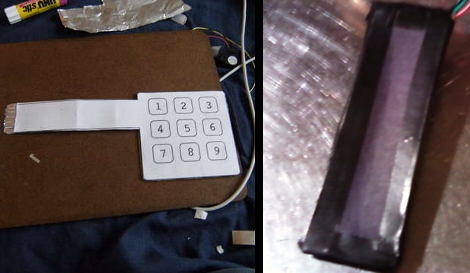[youtube=http://www.youtube.com/watch?v=WCTvggKuPvU&feature=player_embedded]
Robot enthusiast [Vitalijus Rodnovas] built this rig to allow a humanoid robot to mimic his own body movements in real time. [Rodonovas] refers to his man-machine interface as a “master-slave suit,” but elsewhere this is often called a waldo after a prescient 1942 [Robert Heinlein] novella. This project page is slight on details and is mostly written in his native Lithuanian, but the pictures speak volumes, and with a little help from Google Translate we can learn the essential facts: The robot itself is a commercially-available kit, the Kondo KHR-1HV from Japan. The custom-built harness uses a collection of surplus Soviet-era military potentiometers (acquired on eBay) to read the positions of his elbows and shoulders, then an ATmega8-based interface board translates these readings into motion commands sent to the robot’s onboard controller. Some additional notes and code can be found on the RoboSavvy Forum.
Does it work? Just watch. His grin as the video progresses is infectious!
Hack a Day has previously covered other Waldos, but this latest deserves style points for its lightweight simplicity.

















